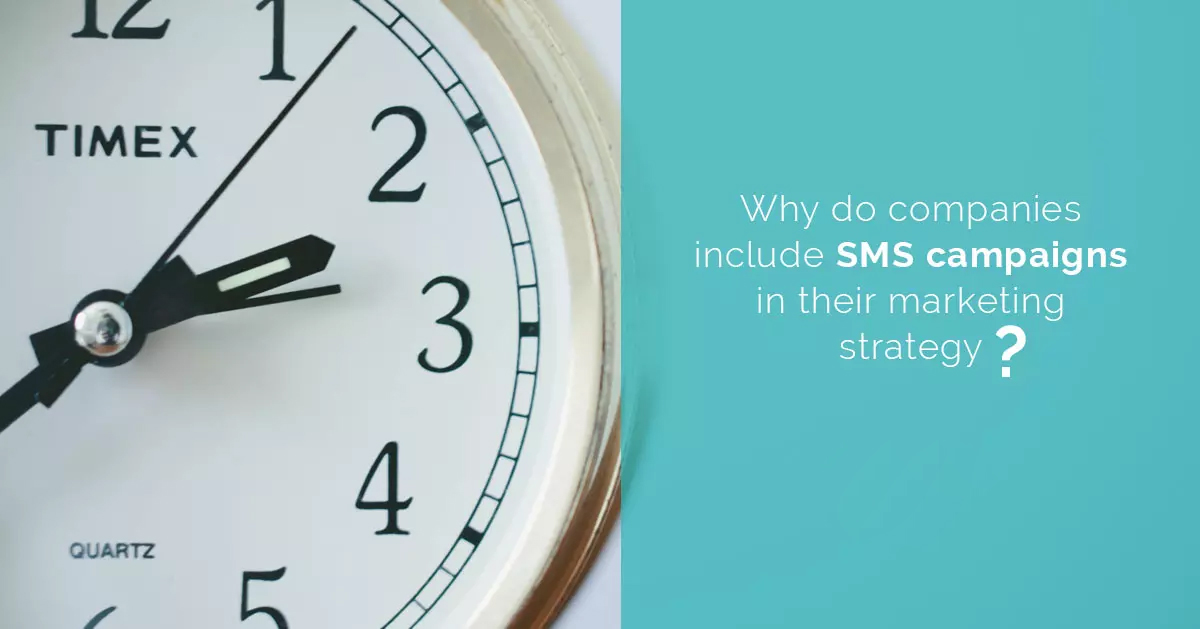Last update: Jun 28, 2022
Why do companies include SMS campaigns in their marketing strategy?


SMS appeared in 1992 and has slowly but surely become the most popular method of communication amongst users with mobile phones.
SMS for businesses is a highly effective mobile marketing tool, due to its versatility and results.
SMS utilizes a protocol to send short messages mobile through telephone networks. After its inception in 1992, the Short Message Service became the most widely used data application in 2010, used by 80% of people with a mobile phone.
In this period, the smartphone appeared. The smartphone allowed people to continue using SMS, but alongside a wide variety of applications that up until that point, had been restricted to desktop computers or laptops. Email, instant messaging and chat programs competed with the SMS service.
Apps like Skype, WhatsApp, Telegram, Line, WeChat, Viber and Facebook Messenger have acted as rivals to SMS. However, their growth as an alternative channel for communication has not affected the utility of SMS, which has become one of the most popular, principally for private use.
SMS is an excellent communication channel between users, clients and subscribers. Its effectiveness makes it an ideal marketing tool, with its open (and read) rate of 90% just a few minutes after it is sent and received.
SMS also offers punctual delivery in a way that cannot be achieved with email or the messaging apps mentioned above. The principal reason for this is that you don’t need an interaction between the sender and the recipient.
The Short Message Service is the default communications channel found on every mobile phone. You don’t need previous connections – a Wi-Fi network for example – or to accept connection requests. Nor does the sender and recipient have to download the same application in order to communicate.
The telephone connection allows users to receive messages faster than through any other messaging service. Messaging apps only work when the phone has connection to the internet, and various apps also require different compatibilities in terms of hardware and software. Thus a process of natural selection occurs, eliminating the phones or smartphones that aren’t compatible with particular types of software.
Not all messaging applications are available for the operating systems of mobile phones.
SMS can be classified into two groups: person to person SMS (P2P), where two mobile phone users exchange messages, and person-application SMS (A2P).
Typically, A2P SMS are used for confirming payments, reminders for appointments, updating bank accounts, buying tickets for shows and displaying travel tickets and boarding cards etc. These are transactional SMS.
The problem with A2P SMS is that to launch a platform to send messages can be costly. Traditional methods require a company that wants to work within the SMS marketing sector to reply through a variety of intermediaries – such as SMS gateway providers, sellers and service distributors – before obtaining access to the SMS services of different network operations.
A new generation of cloud communication platforms utilize technology that is easy to launch to improve the quality of message delivery. They also combine a payment cost model for use of cloud services with simple tools for mobile application programming interfaces (API) to facilitate the integration of developers in their applications whilst keeping operational costs low.
This means that A2P messaging is accessible to more companies – especially startups – since in the past, app developers were limited by a lack of human and financial recourses.